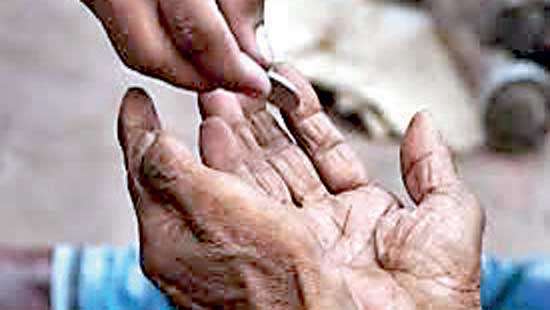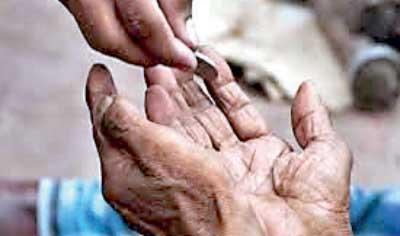Reply To:
Name - Reply Comment

While the pandemic in the last two years created a segment of people identified as ‘new poor’, who were on the brink of poverty, the economic crisis, which soon followed, tipped them down below the poverty line, sending the country’s official poverty levels at least multiple levels higher than what was prior to the pandemic.
 According to the latest available data through 2019, Sri Lanka’s poverty headcount, measured through the share of population living below the poverty line, stood at 14.3 percent, which translated into 3.04 million people.
According to the latest available data through 2019, Sri Lanka’s poverty headcount, measured through the share of population living below the poverty line, stood at 14.3 percent, which translated into 3.04 million people.
However, opposition lawmaker Dr. Harsha de Silva suspected this to have risen by many times in the last two years, given the data coming out on malnutrition and lack of access to food by the people after the economy plunged into its worst crisis, with food inflation running at over 90 percent.
Sri Lanka made significant strides in reducing poverty in the last two and a half decades, bringing down the Poverty Head Count Index (PCHI) from 28.8 percent in 1995/1996 to 3.2 percent in 2019, based on the Household Income and Expenditure Survey (HIES) in 2002.
However, when the 2019 survey was updated with the HIES 2012/13 data, the poverty head count ratio rose 4.4 times the 2002 levels, to 14.3 percent in 2019.
Meanwhile, HIES 2019 revealed that approximately one out of every six Sri Lankans were multidimensionally poor and experience deprivations across 42 percent of the weighted indicators.
According to the data, even before the pandemic, Sri Lanka’s national multidimensional poverty headcount ratios were higher at 16.6 percent in rural areas and significantly higher at 51.3 percent in the estate sector.
This reflects that even prior to the pandemic in 2020, a significant share of the Sri Lankan population was in poverty and the pandemic created ‘a new poor’—a segment of population, who became closer to falling below the poverty line, as many lost their jobs and livelihoods, due to the prolonged lockdowns, which took an immense toll on their economic well-being.
As inflation became more entrenched from the back half of last year, followed by the sudden collapse of the economy in March this year, this segment was plunged into poverty.
As Sri Lanka battles to emerge out of the crisis with the support of the International Monetary Fund, implementing some painful reforms, officials are now looking at the most effective mechanism to channel targeted relief by way of direct cash transfers to these segments that have become impoverished.